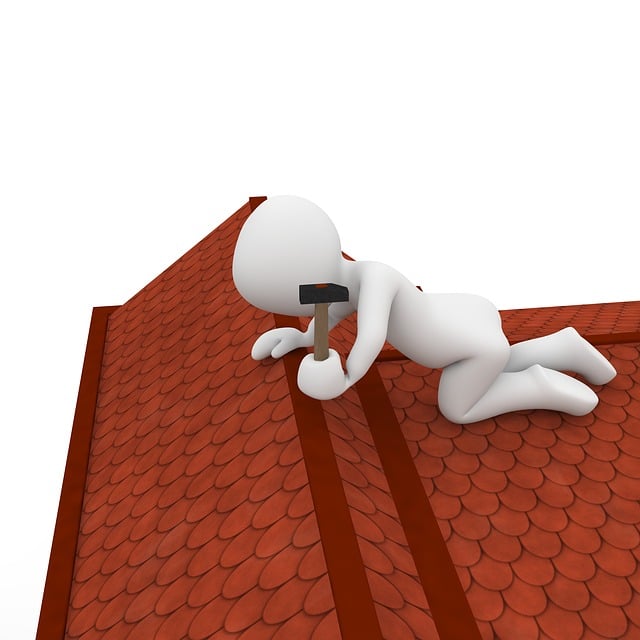The demand for sustainable building practices is driving the adoption of eco-friendly waterproofing methods, particularly waterproof roof coatings. These coatings, made from natural or recycled materials like plant-based oils and resins, offer effective water protection without harmful chemicals, enhancing energy efficiency and structural longevity. Case studies demonstrate their effectiveness in various projects, proving they provide robust protection while minimizing environmental impact. By choosing waterproof roof coatings, builders can meet sustainability goals, foster a greener future, and ensure high-performance roofing solutions.
In today’s eco-conscious world, sustainable project developers are constantly seeking innovative solutions. One key area of focus is waterproofing, a critical yet often overlooked aspect of green construction. This article explores the need for environmentally friendly waterproofing options and highlights the benefits of waterproof roof coatings in promoting sustainability. We’ll delve into various types of eco-safe materials, successful implementation strategies, and inspiring case studies, all centered around the growing importance of waterproof roof coatings in sustainable practices.
Understanding the Need for Eco-Friendly Waterproofing
In today’s environmentally conscious world, the demand for sustainable building practices is higher than ever. This includes finding eco-friendly waterproofing solutions for various projects, especially when it comes to roofing. Traditional waterproofing methods often involve harmful chemicals and materials that can have adverse effects on both the environment and human health. As such, there’s a growing need for alternative options, such as waterproof roof coatings, that offer effective protection without compromising sustainability.
Waterproof roof coatings provide an excellent opportunity to meet this demand. They are designed to shield structures from water penetration while being made from natural or recycled materials. These innovative solutions not only contribute to reduced environmental impact but also enhance the building’s energy efficiency and longevity. By choosing eco-friendly waterproofing, builders and developers can ensure their projects align with sustainable goals without sacrificing quality or performance.
Benefits of Waterproof Roof Coatings in Sustainable Projects
Waterproof roof coatings offer a multitude of benefits for sustainable projects, aligning perfectly with environmental stewardship goals. These advanced materials provide an effective barrier against moisture intrusion, preventing water damage and prolonging the lifespan of roofing systems. By eliminating the need for frequent repairs and replacements, they significantly reduce waste generation and associated carbon emissions.
Moreover, eco-friendly waterproof coatings are designed to be durable, breathable, and often made from renewable resources. This ensures minimal impact on the environment while enhancing the energy efficiency of buildings by regulating indoor temperatures. Such coatings also contribute to improved air quality inside structures, as they inhibit the growth of mold and mildew—common issues caused by water infiltration.
Types of Environmentally Safe Waterproofing Materials
When it comes to sustainable construction, choosing eco-friendly waterproofing materials is a critical step in ensuring both the longevity of a structure and the protection of the environment. Thankfully, there are several options available that offer superior performance while minimizing harm to ecosystems. One popular choice is waterproof roof coatings derived from natural resins or plant-based oils, which provide an effective barrier against water intrusion without releasing harmful chemicals. These coatings not only protect buildings but also allow for breathability, reducing the need for excessive ventilation and energy consumption.
Another category of environmentally safe waterproofing materials includes membrane systems made from recycled content or bio-based polymers. These innovative solutions mimic traditional synthetic membranes but with a lower environmental impact. Additionally, they offer excellent resistance to UV rays, temperature fluctuations, and chemical exposure, ensuring structural integrity over time. By opting for these advanced yet eco-conscious options, builders and developers can contribute to a greener future while maintaining the highest standards of protection against the elements.
Implementing Eco-Conscious Waterproofing Practices
In the pursuit of sustainable construction, adopting eco-conscious waterproofing practices is a significant step. Traditional waterproofing methods often involve harmful chemicals and materials, contributing to environmental degradation. However, modern solutions offer an array of eco-friendly alternatives, particularly in the form of waterproof roof coatings. These innovative products provide effective protection against water penetration while minimizing their ecological footprint.
Waterproof roof coatings, for instance, are designed to create a durable barrier on various surfaces, including metal, asphalt, and concrete. They are made from natural or recycled content, such as plant-based oils and resins, reducing the use of petroleum-derived products. These coatings not only offer superior water resistance but also exhibit excellent breathability, allowing moisture vapor to escape, which is crucial for maintaining indoor air quality and structural integrity. By choosing eco-friendly waterproofing options like these, builders and project managers can contribute to a greener built environment without compromising on performance or durability.
Case Studies: Successful Eco-Friendly Waterproofing Projects
In recent years, numerous successful case studies have demonstrated the effectiveness and durability of eco-friendly waterproofing solutions for sustainable projects. These initiatives showcase how environmentally conscious practices can seamlessly integrate with robust structural protection. For instance, a prominent project involved the application of plant-based waterproof roof coatings on a multi-storey residential building in an urban setting. The coating not only provided superior waterproofing but also enhanced the building’s energy efficiency by reflecting sunlight and reducing heat absorption.
Another notable case study focused on a commercial warehouse renovation where natural rubber-based membranes were used to create a sustainable, long-lasting waterproof barrier. This approach minimized environmental impact while ensuring structural integrity against water intrusion, extreme weather conditions, and varying temperatures. These real-world applications highlight the versatility and performance of eco-friendly waterproofing options, making them viable alternatives for projects seeking to balance sustainability with superior protection.
In conclusion, adopting eco-friendly waterproofing options is not just a trend but a necessary step towards sustainable construction practices. By opting for waterproof roof coatings and choosing environmentally safe materials, builders can significantly reduce their project’s carbon footprint. As the demand for green buildings continues to rise, understanding and implementing these innovative waterproofing solutions will be key to a more sustainable future, ensuring both longevity and environmental responsibility in every project.
